Opinion & Analysis
The Evolution of the Hogan Grip
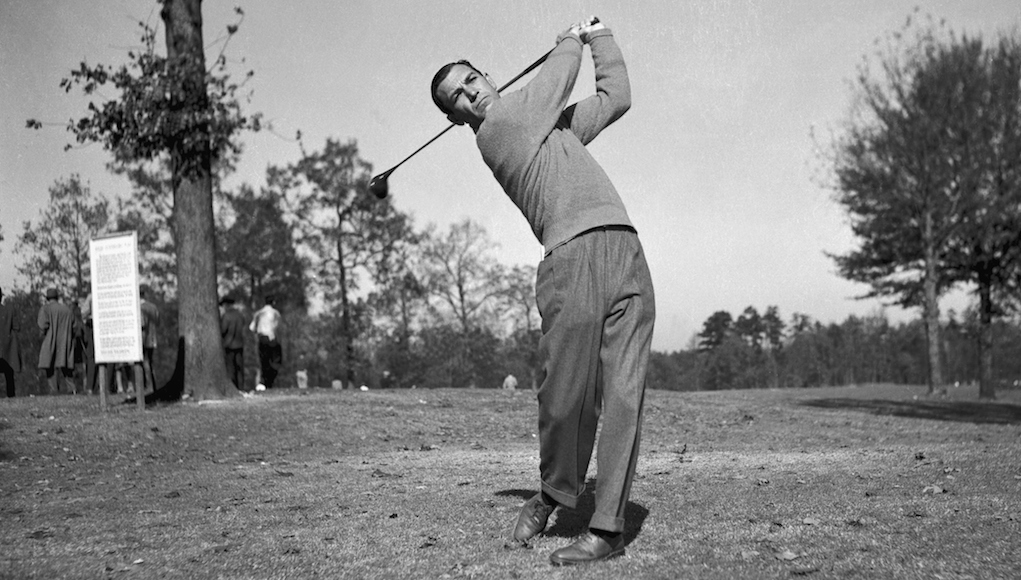
If you were to vote on who would truly be “the most interesting man in golf,” I believe Ben Hogan should win hands down. There may be a few better players in history (not many), but none had the career trajectory of Hogan, and certainly none cultivated the mystery that Hogan did regarding his technique.
Hogan’s ball striking skills were so superior (in 1940 he won three tournaments in two weeks, shooting 34-under par for 216 holes, missing just two greens in regulation) that his fellow competitors would stop their own practice to watch him on the range. When writing or speaking of the role of technique in his rise from struggling touring pro in most of the 1930’s to the game’s greatest practitioner of his time, Hogan regularly referred to the evolution of the way he gripped the club and how that affected his swing as possibly the single most important factor. His accounts, however, are often contradictory and confusing. As some have suggested, this may have been on purpose, as Hogan was loath to offer information for free that he had worked so tirelessly for on his own.
There are quite a number of sources of information regarding Hogan’s life and career, including three full-length biographies (Hogan: The Man Who Played for Glory by Gene Gregston, 1978, Hogan by Curt Sampson, 1997, and Ben Hogan, an American Life by James Dodson, 2004), two full-length books published by Hogan himself (Power Golf and Ben Hogan’s Five Lessons: The Modern Fundamentals of Golf), and various interviews and articles including “This is My Secret” from Life Magazine in 1955, and one-on-one interviews with Nick Seitz of Golf Digest in 1985, with George Peper of Golf Magazine in 1987, and a television interview with Ken Venturi. In each of these sources, the subject of Hogan’s grip arises, and the information given about how he arrived at his beliefs as to the details of assuming a proper grip and how he changed his grip over time are sometimes conflicting, and certainly confusing at best. For the purposes of this review, we will start with Hogan’s own words and writings.
One thing we need to do right away is to dispel the myth that Hogan was actually left-handed. In a 1987 Golf Magazine article, editor George Peper interviewed Hogan and asked this question: “You were a natural left-hander who took up the game right-handed, weren’t you?” To which Hogan responded: “No, that’s one of those things that’s always been written, but it’s an absolute myth. The truth is, the first golf club I owned was an old left-handed, wooden-shafted, rib-faced mashie that a fellow gave me, and that’s the club I was weaned on. During the mornings, we caddies would bang the ball up and down the practice field until the members arrived and it was time to go to work. So, I did all that formative practice left-handed, but I’m a natural right-hander.”
This should quiet all the people who insist Hogan was a lefty who played righty and that was a big advantage (which is not true at all, but that’s another story), and affected the way he held the club. Of course, those who claim Hogan was a natural lefty do so for a good reason. Here is what Hogan wrote in Ben Hogan’s Five Lessons: The Modern Fundamentals of Golf, which was published in 1957: “I was born left-handed — that was the normal way for me to do things. I was switched over to doing things right-handed when I was a boy, but I started golf as a left-hander because the first club I ever came into possession of, an old five-iron, was a left-handed stick”. If you ever wondered why Hogan is considered to be such a mystery, and why there is so much debate about what he did and why he did it, you can start right here.
Hogan first wrote about his grip in his first book, Power Golf, published in 1948. He had won 13 tournaments, including the PGA Championship (his first major), and was the leading money winner on the Tour. He was the dominant figure in the game, but in 1947 he slumped a bit and was outshined by Jimmy Demaret. He came back strong in 1948 with 11 wins and two majors, leading the money list and winning the Player of the Year award. The swings and posed photos in Power Golf are taken at Augusta National, most likely in 1947. The first chapter in Power Golf is titled, “Evolution of the Hogan Grip” (I stole that for this article) and starts by explaining that he started playing left-handed (see above), but he switched to righty because “the only clubs I could get were right-handed clubs.” As you can see, this is already getting confusing, as he never mentions whether he was right-handed or left-handed to begin with, but only that his first club was left-handed. You will see Hogan’s grip change in photos, but Hogan’s explanations as well as the opinions and observations of his biographers as to what the changes were and how they came about are often contradictory. Nevertheless, I will try to follow the information as best I can and make as much sense of this important topic in Hogan’s career as possible. Here is an excerpt from that first chapter:
“…let me say that I have tried all of the grips known to golfers at some time or another in my career. The grip I now use (in 1947) was arrived at by a series of trial-and-error experiments which began when I first took up the game. As recently as the fall of 1945, when I got out of the service, I made a radical change in my grip which I had been experimenting with whenever I got a chance to play golf while in the Army. I had been aware for some time that if I wanted to make a comeback as a successful golfer that I would have to make a change in my grip to correct a tendency I always had to over swing on the backswing. By the time I resumed tournament play, I had made the change and had everything in good working order. Formerly I used a grip in which I had what might be best described as a long thumb when speaking of the position of the thumb of the left hand on the shaft. During the course of the backswing that thumb used to slide down on the shaft, and as a result, I was always guilty of a certain looseness at the top of my swing which prevented me from getting the maximum of control. In correcting this, I pushed the left thumb back up on the shaft. The entire change couldn’t have amounted to more than half an inch in the movement of the thumb, but it was enough to restrict my backswing so that it no longer is loose.”
Hogan writes of his grip in more detail in Five Lessons: “When I changed over to the right side, possibly as a hangover from my left-handed start, I first used a cross-hand grip. I experimented next with the interlocking grip, and at length — I must have been about 15 at the time (around 1927) — I finally arrived at the overlapping grip. I was working then in the golf shop at the Glen Garden Club, and I copied the grip of Ted Longworth, the pro … Over the years since first adopting the overlapping grip, I have made two minor alterations. Right after I came out of the service, I changed from what is called the “long thumb” to a modified “short thumb.” I made my second alteration in 1946, moving my left hand a good half inch to the left. I was working then to find some way to of retaining my power while curbing my occasional tendency to hook. Moving my left hand over so that that thumb was directly down the middle of the shaft was the first step in licking that problem.” I find it quite interesting that Hogan left that bit of information out of “Power Golf,” and that he only revealed it after his semi-retirement in 1955 in the Life Magazine article “Hogan’s Secret” and the 1956 publication of “Five Lessons.” My guess is that he omitted it on purpose, not wanting to give away any competitive advantage.
Curt Sampson, in his biography of Hogan simply titled “Hogan,” provides some color to the story of Hogan’s beginnings as a caddy and his interaction with Longworth: “Long driving had been a macho thing in the Glen Garden caddie yard. Whatever caddies were still around at the end of the day would hit one ball each from the first tee: the shortest hitter had to run out onto the deserted course and pick up the balls, then they would do it again.” As Longworth recalled it for a story in the PGA Championship program in 1946, a few members always emerged from the 19th hole to watch. “Yah, Bennie, get ready to chase ‘em again,” the other boys would say, according to Longworth. (Byron) Nelson never lost; Hogan never won. Bennie tried hitting it cross-handed.”
“Bennie, if you don’t change that hog-killer’s grip, you might as well take up cattle rustling,” Longworth told Hogan. The tall, stoop shouldered pro bent down and untangled the boy’s hands. Since distance was the name of this game, he gave Bennie a distance grip, turning his left hand to the right and his right hand underneath the club, thus helping him close the clubface during the swing and producing a left-curving shot, a hook. Hooks roll.”
We can imagine what that grip looked like when we see the photo of what Hogan described as a “hook grip” in Power Golf. Looking at the photos of what Hogan thought was the ideal grip, and the one he used at the time, you can readily see how he weakened his grip as he explained.
This is obviously the grip that won Hogan the 1946 PGA Championship and nine tournaments between August of 1945 and April of 1946, but did Hogan make further changes after three-putting the 18th hole to lose the Masters in 1946? The history (no thanks to Hogan himself) is confusing, but let’s see if we can sort it out.
In the 1955 Life Magazine article “This is My Secret” (written after Hogan had essentially retired from competition and for which Hogan was paid $10,000), Hogan explains: “…in 1946, I was having trouble getting the ball in the air. I had a low, ducking, agonizing hook, the kind you can hang your coat on. I was finishing in the money and occasionally winning a tournament, even with a terrible game. But the handwriting was on the wall. If I was going to stay and make a living, something had to be done. I left the Tour and went home to Fort Worth about as desperate as a man can be. I sat and thought for three or four days. One night while laying awake in bed, I began thinking about a technique for hitting a golf ball that was so old it was almost new.” Hogan goes on to talk about the idea of “pronation,” whereby the clubface is rolled open by the hands right from the start of the backswing, and continues to open all the way to the top of the swing. “…before the night was over I had added two adjustments, which on paper made pronation hook-proof without any loss of distance.” Hogan then recounts how well the ideas worked in practice, and then in tournament play when he went to Chicago for the Tam O’ Shanter and won two events in a row. (An interesting side note: as it turns out, Hogan did not recollect this correctly. He finished 4th in the Tam O’ Shanter and it wasn’t until the Colonial later in the summer that he began to dominate the Tour). “The two adjustments had transformed pronation into a bonanza for me. They were so delicate that no one would ever think of looking for them, and I certainly was not going to tell anybody where to look. The first was in the grip. I moved my left hand one-eighth to one-quarter inch to the left so that the thumb was almost directly on top of the shaft. The second adjustment, which is the real meat of the “secret,” was nothing more than a twist or cocking of the left wrist. I cupped the wrist gradually backward and inward so that the wrist formed a slight V at the top of the swing…which had the effect of opening the face of the club to the widest practical extreme at the top of the swing.” Here is a picture from the article of Hogan demonstrating this change in the grip:
Compare this to his depiction of a “slice grip” in Power Golf, just 8 years earlier:
And here is Hogan demonstrating the grip in detail in his instructional masterpiece, “The Five Lessons: The Modern Fundamentals of Golf.”
Note that in the drawing the “V” formed by the left thumb and forefinger definitely points to the left of the chin, which would indicate a two-knuckle grip (Hogan says it should point to the right eye), while in the photo from the Life Magazine article above shows more of a one-knuckle grip where the “V” points more straight up. This makes a huge difference, and studying the pictures in the book it is unclear whether Hogan consistently used either. We can find a major difference between the Power Golf grip and the Five Lessons grip when we look at these two pictures of Hogan placing his left hand on the club:
At first glance, it would appear that Hogan is placing the club in his hand in a similar fashion, but take note of the angle of the shaft to the left forearm and the angle the fingers form in relation to the ground. The Power Golf version promotes more dorsiflexion (inward bending) of the wrist, while the Five Lessons grip is more palm oriented and would be what we would describe now as “weaker.” It is my opinion that Hogan played his best golf from 1946-1953 with his left hand closer to the Power Golf grip than the grip he demonstrates in Five Lessons and in the Life Magazine article. However, it is also evident to me that he steadily weakened his right hand, and that the obvious difference between the right-hand placement demonstrated in Power Golf and that of Five Lessons is more apparent in the videos of his swing after the accident. Let’s look at how he changed his ideas on right hand placement:
The key here in the eventual difference in the right-hand grip can be found in the phrasing. In Power Golf, Hogan says: “The club lies diagonally across the fingers of my right hand.” In Five Lessons, Hogan says: “The club lies across the top joint of the fingers of the right hand.” Here are examples of the finished right-hand grip:
With the club placed more horizontally across the fingers of the right hand at the bottom of the first joint with the palm facing the target, there is already much more of the hand to fold over the club, thus positioning the “V” more straight up at the chin in a weaker position. By positioning the club more diagonally across the fingers Hogan sets the right hand more under the club in a stronger position.
Hogan speaks of his game prior to his epiphany of 1946 as though he was a terrible golfer with a pronounced hook that threatened to end his career at any time. The record shows, however, that he won four events and was the Tour’s leading money winner in 1940. He won five events in 1941, and won both the Vardon Trophy (lowest average scoring average) and led the money list, and in 1942 he won six events and was leading money winner before being called up for service in World War II. Upon his return from the war, he won 5 times after August in 1945, then four more times in 1946 before his first win utilizing his “secret.’ It is apparent, however, that what Hogan found that night lying in bed propelled him to even greater heights from his win at Colonial in 1946 to his accident in early 1949. During that span, he won 29 times, a number that includes three major championships. It is interesting that Cary Middlecoff “remembered a pre-accident Hogan who occasionally missed fairways and greens just like everybody else”, but that “it was in 1950 that he began showing the kind of precision golf that set him apart,” Middlecoff wrote in his book, The Golf Swing.
“In 1950, (Hogan) began to take on the miracle-man aura. Small crowds would gather around him and try to watch his every move anytime he started hitting practice balls.” Hogan himself would disagree with Middlecoff, but said in his interview with Ken Venturi that while he never hit the ball as well after the accident as he had before, he “played” better, noting that it was his belief that course management played a greater role in his success than anyone could imagine. That’s certainly truer when you can hit almost every shot right where you are aiming.
- LIKE333
- LEGIT38
- WOW29
- LOL7
- IDHT7
- FLOP2
- OB2
- SHANK14
Opinion & Analysis
The Wedge Guy: What really makes a wedge work? Part 1

Of all the clubs in our bags, wedges are almost always the simplest in construction and, therefore, the easiest to analyze what might make one work differently from another if you know what to look for.
Wedges are a lot less mysterious than drivers, of course, as the major brands are working with a lot of “pixie dust” inside these modern marvels. That’s carrying over more to irons now, with so many new models featuring internal multi-material technologies, and almost all of them having a “badge” or insert in the back to allow more complex graphics while hiding the actual distribution of mass.
But when it comes to wedges, most on the market today are still single pieces of molded steel, either cast or forged into that shape. So, if you look closely at where the mass is distributed, it’s pretty clear how that wedge is going to perform.
To start, because of their wider soles, the majority of the mass of almost any wedge is along the bottom third of the clubhead. So, the best wedge shots are always those hit between the 2nd and 5th grooves so that more mass is directly behind that impact. Elite tour professionals practice incessantly to learn to do that consistently, wearing out a spot about the size of a penny right there. If impact moves higher than that, the face is dramatically thinner, so smash factor is compromised significantly, which reduces the overall distance the ball will fly.
Every one of us, tour players included, knows that maddening shot that we feel a bit high on the face and it doesn’t go anywhere, it’s not your fault.
If your wedges show a wear pattern the size of a silver dollar, and centered above the 3rd or 4th groove, you are not getting anywhere near the same performance from shot to shot. Robot testing proves impact even two to three grooves higher in the face can cause distance loss of up to 35 to 55 feet with modern ‘tour design’ wedges.
In addition, as impact moves above the center of mass, the golf club principle of gear effect causes the ball to fly higher with less spin. Think of modern drivers for a minute. The “holy grail” of driving is high launch and low spin, and the driver engineers are pulling out all stops to get the mass as low in the clubhead as possible to optimize this combination.
Where is all the mass in your wedges? Low. So, disregarding the higher lofts, wedges “want” to launch the ball high with low spin – exactly the opposite of what good wedge play requires penetrating ball flight with high spin.
While almost all major brand wedges have begun putting a tiny bit more thickness in the top portion of the clubhead, conventional and modern ‘tour design’ wedges perform pretty much like they always have. Elite players learn to hit those crisp, spinny penetrating wedge shots by spending lots of practice time learning to consistently make contact low in the face.
So, what about grooves and face texture?
Grooves on any club can only do so much, and no one has any material advantage here. The USGA tightly defines what we manufacturers can do with grooves and face texture, and modern manufacturing techniques allow all of us to push those limits ever closer. And we all do. End of story.
Then there’s the topic of bounce and grinds, the most complex and confusing part of the wedge formula. Many top brands offer a complex array of sole configurations, all of them admittedly specialized to a particular kind of lie or turf conditions, and/or a particular divot pattern.
But if you don’t play the same turf all the time, and make the same size divot on every swing, how would you ever figure this out?
The only way is to take any wedge you are considering and play it a few rounds, hitting all the shots you face and observing the results. There’s simply no other way.
So, hopefully this will inspire a lively conversation in our comments section, and I’ll chime in to answer any questions you might have.
And next week, I’ll dive into the rest of the wedge formula. Yes, shafts, grips and specifications are essential, too.
- LIKE14
- LEGIT4
- WOW1
- LOL1
- IDHT2
- FLOP2
- OB1
- SHANK1
Golf's Perfect Imperfections
Golf’s Perfect Imperfections: Amazing Session with Performance Coach Savannah Meyer-Clement

In this week’s episode, we spent some time with performance coach Savannah Meyer-Clement who provides many useful insights that you’ll be able to implement on the golf course.
- LIKE0
- LEGIT0
- WOW0
- LOL0
- IDHT0
- FLOP0
- OB0
- SHANK0
19th Hole
Vincenzi’s 2024 RBC Heritage betting preview: Patrick Cantlay ready to get back inside winner’s circle

Just a two-hour drive from Augusta National, the PGA TOUR heads to Harbour Town Golf Links in Hilton Head Island, S.C. Hilton Head Island is a golfer’s paradise and Harbour Town is one of the most beautiful and scenic courses on the PGA TOUR.
Harbour Town Golf Links is a par-71 that measures 7,121 yards and features Bermuda grass greens. A Pete Dye design, the course is heavily tree lined and features small greens and many dog legs, protecting it from “bomb-and-gauge” type golfers.
The field is loaded this week with 69 golfers with no cut. Last year was quite possibly the best field in RBC Heritage history and the event this week is yet another designated event, meaning there is a $20 million prize pool.
Most of the big names on the PGA Tour will be in attendance this week with the exceptions of Hideki Matsuyama and Viktor Hovland. Additionally, Webb Simpson, Shane Lowry, Gary Woodland and Kevin Kisner have been granted sponsors exemptions.
Past Winners at Harbour Town
- 2023: Matt Fitzpatrick (-17)
- 2022: Jordan Spieth (-13)
- 2021: Stewart Cink (-19)
- 2020: Webb Simpson (-22)
- 2019: CT Pan (-12)
- 2018: Sotoshi Kodaira (-12)
- 2017: Wesley Bryan (-13)
- 2016: Branden Grace (-9)
- 2015: Jim Furyk (-18)
In this article and going forward, I’ll be using the Rabbit Hole by Betsperts Golf data engine to develop my custom model. If you want to build your own model or check out all of the detailed stats, you can sign up using promo code: MATTVIN for 25% off any subscription package (yearly is best value).
Key Stats For Harbour Town
Let’s take a look at key metrics for Harbour Town Golf Links to determine which golfers boast top marks in each category over their past 24 rounds.
Strokes Gained: Approach
Strokes Gained: Approach is exceedingly important this week. The greens at Harbour Town are about half the size of PGA TOUR average and feature the second-smallest greens on the tour. Typical of a Pete Dye design, golfers will pay the price for missed greens.
Total SG: Approach Over Past 24 Rounds
- Scottie Scheffler (+1.27)
- Tom Hoge (+1.27)
- Corey Conners (+1.16)
- Austin Eckroat (+0.95)
- Cameron Young (+0.93)
Good Drive %
The fairways at Harbour Town are tree lined and feature many dog legs. Bombers tend to struggle at the course because it forces layups and doesn’t allow long drivers to overpower it. Accuracy is far more important than power.
Good Drive % Over Past 24 Rounds
- Brice Garnett (88.8%)
- Shane Lowry (+87.2%)
- Akshay Bhatia (+86.0%)
- Si Woo Kim (+85.8%)
- Sepp Straka (+85.1%)
Strokes Gained: Total at Pete Dye Designs
Pete Dye specialists tend to play very well at Harbour Town. Si Woo Kim, Matt Kuchar, Jim Furyk and Webb Simpson are all Pete Dye specialists who have had great success here. It is likely we see some more specialists near the top of the leaderboard this week.
SG: TOT Pete Dye per round over past 36 rounds:
- Xander Schauffele (+2.27)
- Scottie Scheffler (+2.24)
- Ludvig Aberg (+2.11)
- Brian Harman (+1.89)
- Sungjae Im (+1.58)
4. Strokes Gained: Short Game (Bermuda)
Strokes Gained: Short Game factors in both around the green and putting. With many green-side bunkers and tricky green complexes, both statistics will be important. Past winners — such as Jim Furyk, Wes Bryan and Webb Simpson — highlight how crucial the short game skill set is around Harbour Town.
SG: SG Over Past 24 Rounds
- Jordan Spieth (+1.11)
- Taylor Moore (+1.02)
- Wyndham Clark (+0.98)
- Mackenzie Hughes (+0.86)
- Andrew Putnam (+0.83)
5. Greens in Regulation %
The recipe for success at Harbour Town Golf Links is hitting fairways and greens. Missing either will prove to be consequential — golfers must be in total control of the ball to win.
Greens in Regulation % over past 24 rounds:
- Brice Garnett (+75.0%)
- Scottie Scheffler (+69.9%)
- Corey Conners (+69.0%)
- Shane Lowry (+68.3%)
- Patrick Rodgers (+67.6%)
6. Course History
Harbour Town is a course where players who have strong past results at the course always tend to pop up.
Course History over past 24 rounds:
- Patrick Cantlay (+2.34)
- Cam Davis (+2.05)
- J.T. Poston (+1.69)
- Justin Rose (+1.68)
- Tommy Fleetwood (+1.59)
The RBC Heritage Model Rankings
Below, I’ve compiled overall model rankings using a combination of the five key statistical categories previously discussed — SG: Approach (24%), Good Drives (20%), SG: SG (14%), SG: Pete Dye (14%), GIR (14%), and Course History (14%)
- Shane Lowry
- Russell Henley
- Scottie Scheffler
- Xander Schauffele
- Corey Conners
- Wyndham Clark
- Christiaan Bezuidenhout
- Matt Fitzpatrick
- Cameron Young
- Ludvig Aberg
2024 RBC Heritage Picks
Patrick Cantlay +2000 (FanDuel)
With the exception of Scottie Scheffler, the PGA Tour has yet to have any of their star players show peak form during the 2024 season. Last week, Patrick Cantlay, who I believe is a top-5 players on the PGA Tour, took one step closer to regaining the form that’s helped him win eight events on Tour since 2017.
Cantlay limped into the Masters in poor form, but figured it out at Augusta National, finishing in a tie for 20th and ranking 17th for the week in Strokes Gained: Ball Striking. The former FedEx Cup champion will now head to one of his favorite golf courses in Harbour Town, where he’s had immaculate results over the years. In his six trips to the course, he’s only finished worse than 7th one time. The other finishes include three third places (2017, 2019, 2023) and one runner-up finish (2022). In his past 36 rounds at Harbour Town, Cantlay ranks 1st in Strokes Gained: Total per round at the course by a wide margin (+2.36).
Cantlay is winless since the 2022 BMW Championship, which is far too long for a player of his caliber. With signs pointing to the 32-year-old returning to form, a “signature event” at Harbour Town is just what he needs to get back on the winning track.
Tommy Fleetwood +3000 (FanDuel)
I truly believe Tommy Fleetwood will figure out a way to win on American soil in 2024. It’s certainly been a bugaboo for him throughout his career, but he is simply too talented to go another season without winning a PGA Tour event.
At last week’s Masters Tournament, Fleetwood made a Sunday charge and ended up finishing T3 in the event, which was his best ever finish at The Masters. For the week, the Englishman ranked 8th in the field in Strokes Gained: Approach, 10th in Strokes Gained: Ball Striking and 16th in Strokes Gained: Putting.
Harbour Town is a perfect layout for Fleetwood, and he’s had relative success at this Pete Dye design in the past. In his four trips to the course, he’s finished inside of the top 25 three times, with his best finish, T10, coming in 2022. The course is pretty short and can’t be overpowered, which gives an advantage to more accurate players such as Fleetwood. Tommy ranks 8th in the field in Good Drive % and should be able to plot his way along this golf course.
The win is coming for Tommy lad. I believe there’s a chance this treasure of a golf course may be the perfect one for him to finally break through on Tour.
Cameron Young +3300 (FanDuel)
Cameron Young had a solid Masters Tournament last week, which is exactly what I’m looking for in players who I anticipate playing well this week at the RBC Heritage. He finished in a tie for 9th, but never felt the pressure of contending in the event. For the week, Young ranked 6th in Strokes Gained: Off the Tee and 6th in Strokes Gained: Ball Striking.
Despite being one of the longest players off the tee on the PGA Tour, Young has actually played some really good golf on shorter tracks. He finished T3 at Harbour Town in 2023 and ranks 20th in the field in Good Drive% and 16th in Greens in Regulation in his past 24 rounds. He also has strong finishes at other shorter courses that can take driver out of a players hand such as Copperhead and PGA National.
Young is simply one of the best players on the PGA Tour in 2024, and I strongly believe has what it takes to win a PGA Tour event in the very near future.
Corey Conners +5500 (FanDuel)
Corey Conners has had a disappointing year thus far on the PGA Tour, but absolutely loves Harbour Town.
At last week’s Masters Tournament, the Canadian finished T30 but ranked 20th in the field in Strokes Gained: Approach. In his past 24 rounds, Conners ranks 3rd in the field in Strokes Gained: Approach, 3rd in Greens in Regulation % and 24th in Good Drive %.
In Conners’ last four trips to Harbour Town, his worst finish was T31, last season. He finished T4 in 2021, T12 in 2022 and ranks 8th in Strokes Gained: Total at the course over his past 36 rounds.
Conners hasn’t been contending, but his recent finishes have been encouraging as he has finished in the top-25 in each of his past three starts prior to The Masters, including an impressive T13 at The PLAYERS. His recent improvement in ball striking as well as his suitability for Harbour Town makes Conners a high upside bet this week.
Shane Lowry (+7500) (FanDuel)
When these odds were posted after Lowry was announced in the field, I have to admit I was pretty stunned. Despite not offering much win equity on the PGA Tour over the last handful of years, Shane Lowry is still a top caliber player who has the ability to rise to the top of a signature event.
Lowry struggled to score at The Masters last week, but he actually hit the ball really well. The Irishman ranked 1st for Strokes Gained: Approach on the week and 7th in Strokes Gained: Ball Striking. As usual, it was the putter that let him down, as he ranked 60th in the field in Strokes Gained: Putting.
Harbour Town is most definitely one of Lowry’s favorite courses on the PGA Tour. In his six starts there, he’s finished in the top 10 three times, including third twice. Lowry is sensational at Pete Dye designs and ranks 7th in Strokes Gained: Total in his past 36 rounds on Dye tracks.
Lowry is perfect for Harbour Town. In his past 24 rounds, he ranks 5th in Strokes Gained: Approach, 2nd in Good Drive% and 5th in Green in Regulation %. If he figures it out on the greens, Shane could have his first win in America since 2015.
Lucas Glover +12000 (FanDuel)
This is one of my weekly “bet the number” plays as I strongly believe the odds are just too long for a player of Glover’s caliber. The odds have been too long on Glover for a few weeks now, but this is the first event that I can get behind the veteran being able to actually contend at.
Glover is quietly playing good golf and returning to the form he had after the understandable regression after his two massive victories at the end of 2023. He finished T20 at The Masters, which was his best ever finish at Augusta National. For the week, Lucas ranked 18th for Strokes Gained: Approach and 20th in Strokes Gained: Ball Striking.
Over his past 24 rounds, Glover ranks 9th in Strokes Gained: Approach and 13th in Good Drive %. Harbour Town is a short course that the 44-year-old will be able to keep up with the top players on Tour off the tee. He’s played the course more than 20 times, with mixed results. His best finishes at Harbour Town include a T7 in 2008, but recently has a finish of T21 in 2020.
Glover has proven he can contend with the stars of the Tour on any given week, and this number is flat out disrespectful.
- LIKE30
- LEGIT5
- WOW2
- LOL1
- IDHT1
- FLOP2
- OB0
- SHANK2
-

 19th Hole1 week ago
19th Hole1 week agoDave Portnoy places monstrous outright bet for the 2024 Masters
-

 19th Hole3 weeks ago
19th Hole3 weeks agoThings got heated at the Houston Open between Tony Finau and Alejandro Tosti. Here’s why
-

 19th Hole1 week ago
19th Hole1 week agoTiger Woods arrives at 2024 Masters equipped with a putter that may surprise you
-

 19th Hole2 weeks ago
19th Hole2 weeks agoReport: Tiger Woods has ‘eliminated sex’ in preparation for the 2024 Masters
-

 19th Hole4 days ago
19th Hole4 days agoTwo star names reportedly blanked Jon Rahm all week at the Masters
-

 19th Hole4 days ago
19th Hole4 days agoNeal Shipley presser ends in awkward fashion after reporter claims Tiger handed him note on 8th fairway
-

 19th Hole3 days ago
19th Hole3 days agoReport: LIV Golf identifies latest star name they hope to sign to breakaway tour
-

 19th Hole2 weeks ago
19th Hole2 weeks agoAddiction, spinal fusion, and scam artists – Everything Anthony Kim revealed in candid interview with David Feherty

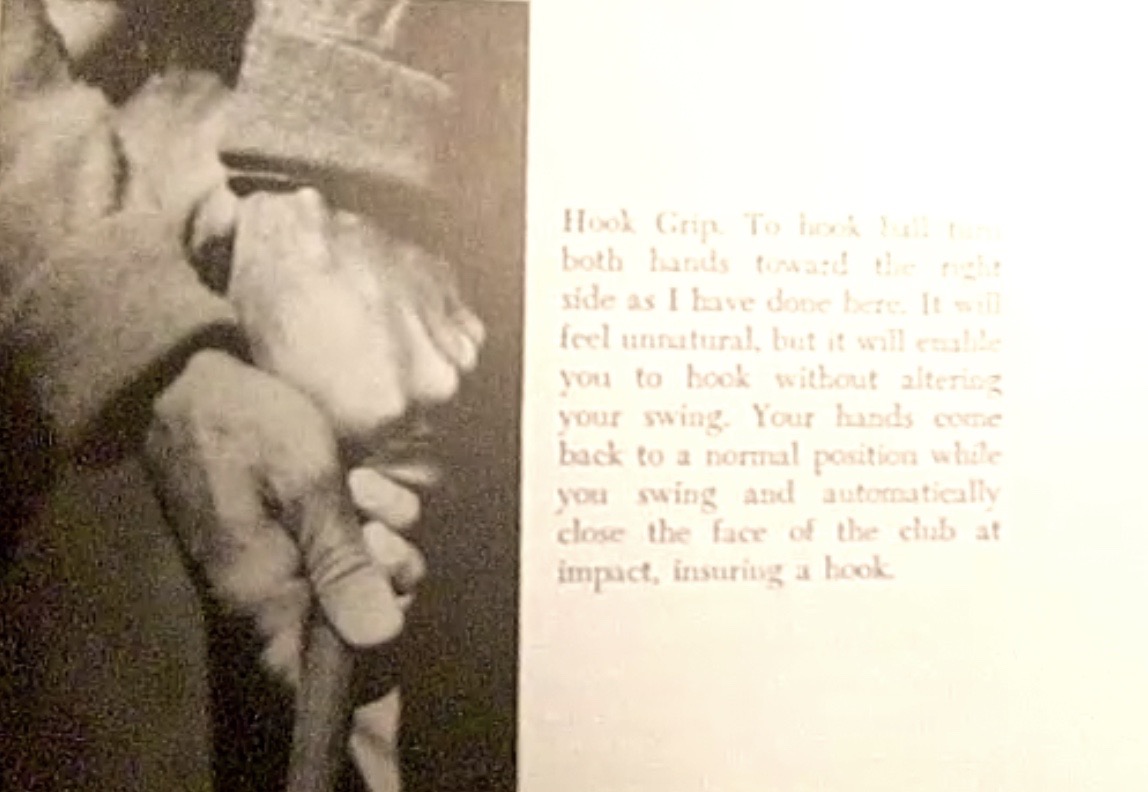
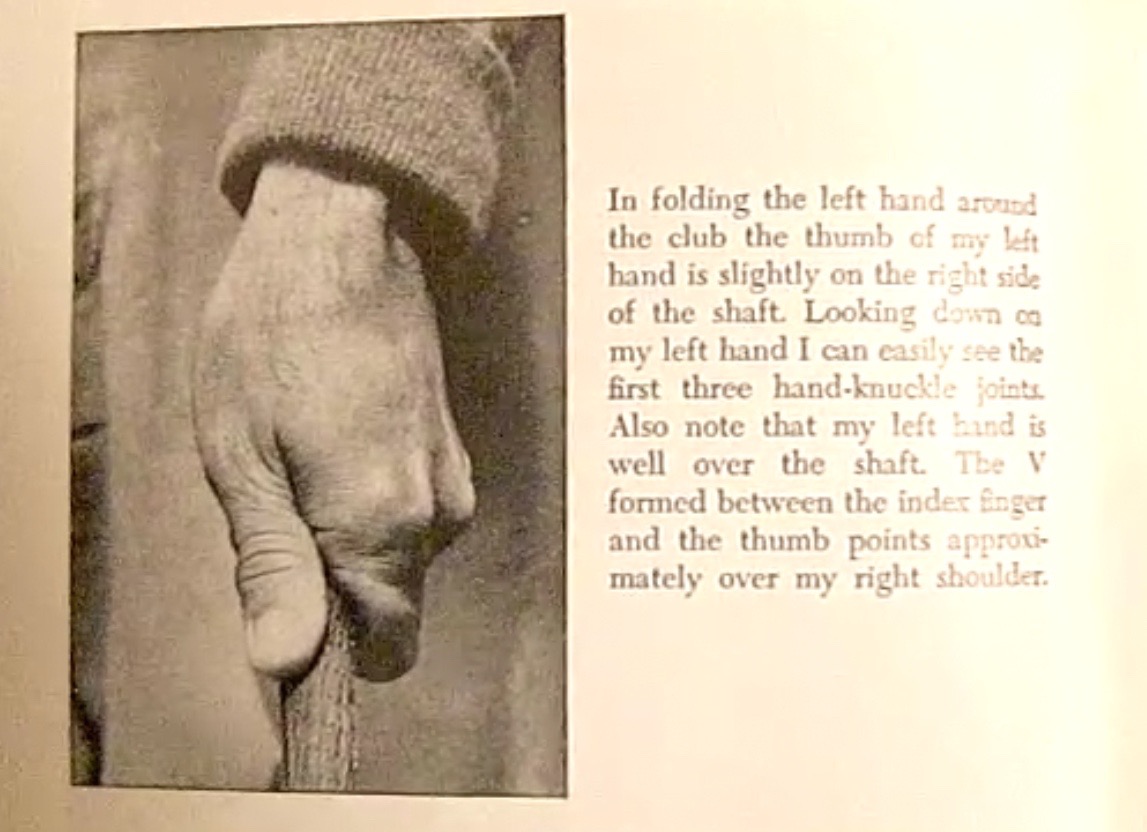
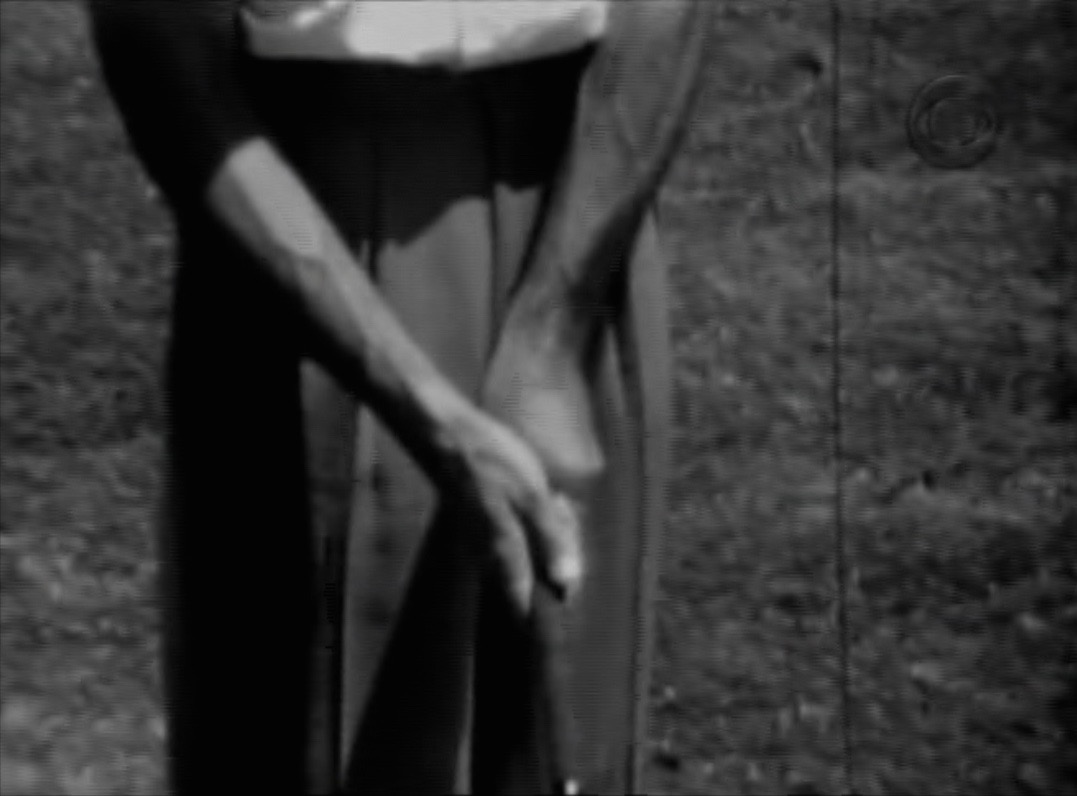
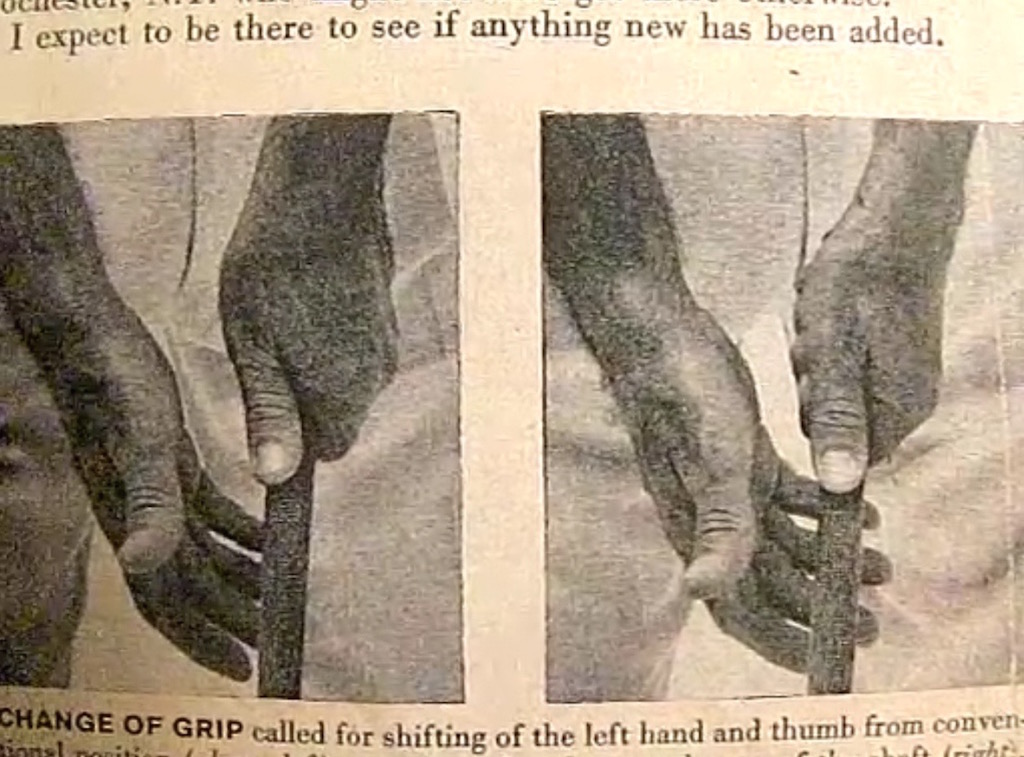


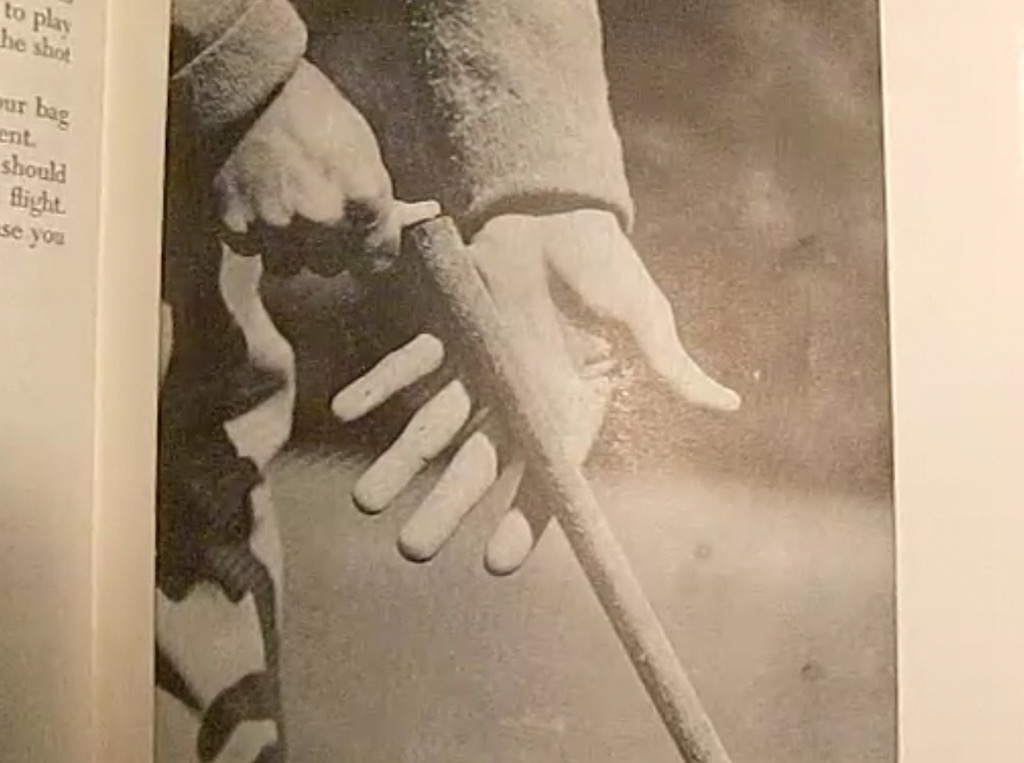
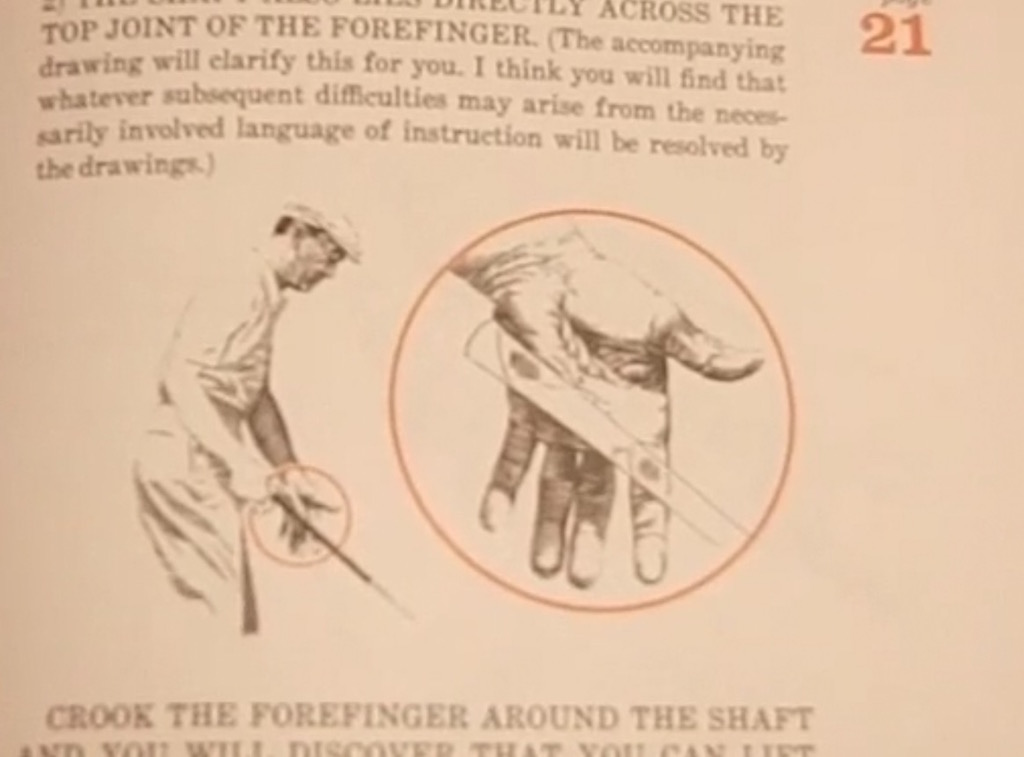
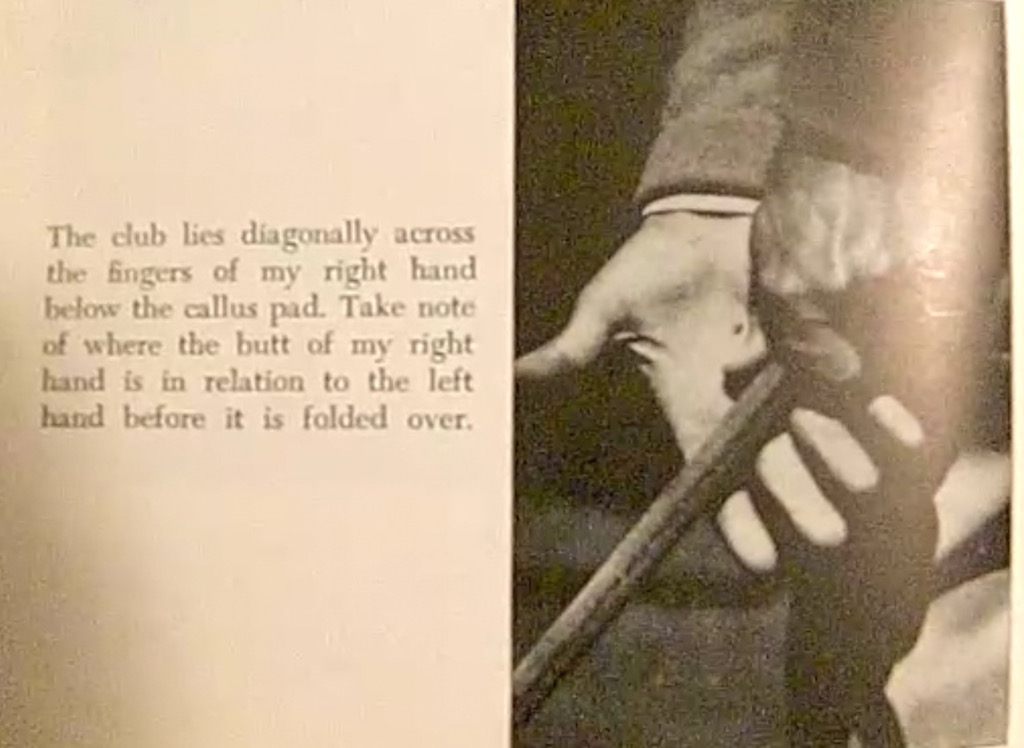

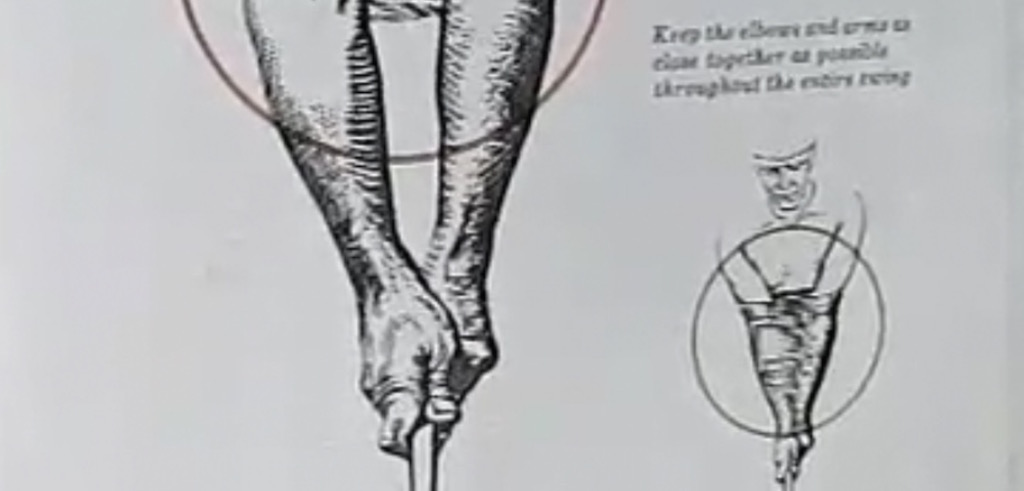
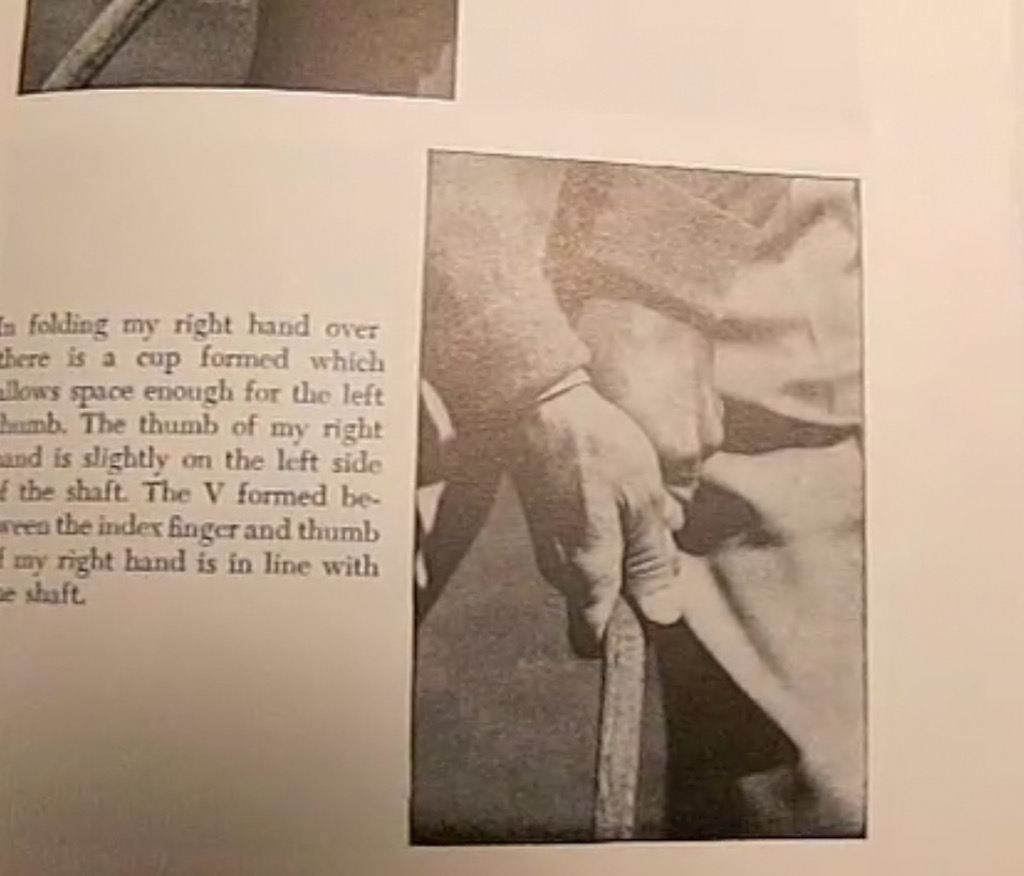















Big GG
Apr 2, 2021 at 1:57 pm
There is always no mention of the fact that Hogan did not write 5 lessons.
Art Gula
Aug 29, 2018 at 7:52 pm
Hi Wayne , I’ve been playing golf for 50 years and my beliefs and swing are comprised of nothing but Mr Hogan. From the stance, grip, rotation , body and finish. I maintain a 0 & 1 handicap in 3 leagues. Thanks
ART GULA
Dan Forant
Aug 6, 2017 at 6:25 am
Wow after playing 40 years shooting high 70’s/low 80’s, the long thumb deal has worked wonders for my game gaining control and distance since being in the 70’s age bracket. The short thumb actually shortened my clubhead arc length.
Steve Wozeniak
Aug 1, 2017 at 4:40 pm
Long article for an easy subject……his set up changed his grip. Once he learned how to set up correctly he started to feel the forces in the swing. As far as the long and “short” thumb, hello, put your left hand on the club and now push your thumb down and long……TENSION. He learned to just simply hold the club in the fingers like an athlete tension free. After setting up correctly he started to feel the inner and outer forces working, half a left arm and wishing he had three right hands when he wanted to hit it hard. He NEVER felt this before in his old set up and swing. And he DID NOT dig it out of the dirt he learned this from my Coach. Who also taught this to Claude Harmon, Jackie Burke, Jack Grout and many others that wanted to listen.
Steve Wozeniak PGA
Bob Pegram
Aug 1, 2017 at 2:55 pm
I recently read a reference to Ken Venturi’s comments on Hogan’s swing. He mentioned that Hogan was a “knuckle-dragger,.” In other words, he had extremely long arms in relation to his body size. Venturi said there are some recommended positions in The Five Fundamentals that are impossible for a person with shorter arms to get into.
Other item: I wonder if, after Hogan’s accident, he had pains that told him when he was swing the right way versus the wrong way. That would sure tell him immediately when his swing was wandering from the ideal swing he wanted.
Howard Clark
Jul 31, 2017 at 2:49 pm
Wouldn’t be nearly as interesting today, with the ProV1x which you can’t hook no matter how poor your swing or grip.
TeeBone
Jul 31, 2017 at 6:33 pm
Funny, I still see plenty of “banana” slices out there.
Lou
Jul 31, 2017 at 11:05 am
The one thing that Ben failed to adequately give up in his writings and interviews was the real “secret” to his stroke and that is he actually had a golf swing. When compared to another with a real swing, Bobby Jones, it is obvious to the practiced eye the left shoulder was the center of the swing and the hands did little other than guide the club face. The grip adjustments he made were necessary to move the direction from the left side of the fairway to the right, just as so often claimed. Wayne did a fine job of showing the evolution of Ben’s grip and that is all he claimed with the headline. Thanks Wayne! Ike
Wayne DeFrancesco
Jul 31, 2017 at 9:13 am
I would say that Hogan had two main problems he addressed over time. One was the length of his swing, especially with the driver, and the other was the tendency to hook the ball at inopportune times. His early swings with the longer clubs were extremely long, looking almost John Daly -like in the 30’s. I believe that he felt that the shortened left thumb helped him gain control of the top of his swing, although if you watch his swings through all his major wins his driver swing was consistently past parallel. In the drawings you reference in The Five Lessons Hogan’s actual swing resembles the “If his grip is faulty” picture much more than the “if his grip is correct” picture. Hogan’s actual driver swing never was short of parallel as depicted in the book. Part of the reason that he continued to swing the club past parallel has to do with his solution to his hooking problem, which was to roll the face open and cup his wrist from the start of the swing all the way to the top. This left forearm pronation combined with left wrist dorsiflexion creates additional wrist cock and procuces an increased angle between the left arm and the shaft. Hogan’s backswing had a “flinging” aspect to it where he started with a slight handle drag then “threw” the clubhead against his hands in mid-backswing before “catching” the clubhead and interrupting the backswing with the reversal of the right pelvic clockwise rotation to counter-clockwise. With the left wrist cupped and the face fanned open the change of direction produced a large amount of clubhead lag. Hogan was very strong but of slight build at less than 140 pounds and found that the speed he could create with this action kept him hitting the ball long enough to compete while gaining overall control. As Hogan got older and his trunk thickened he lost some of his trunk mobility and ability to move his pelvis, so when you look at swings from the Hogan vs. Snead match and the 1967 Masters you see a much shorter version but the same general characteristics.
Jeff Martin
Jul 30, 2017 at 12:17 pm
Game effort by Wayne, but, like many others, he has fallen prey to the timeline error contained in the August 8, 1955 Life magazine article that incorrectly placed the discovery of the “secret” in early 1946. That timing makes no sense given his playing record in 1945 and 1946, which was exemplary; his play throughout 1947, which was erratic; and the fact that Hogan didn’t win either, let alone both, of George May’s 1946 events, as he recalled he did after finding the “secret”, but did win the 1947 World Championship in September, after a break of a couple weeks (the other George May event was played earlier in the year). More importantly, contemporaneous accounts, for example, the January 10, 1949 Time Magazine cover story, which places the discovery in 1947, and published comments by Henry Cotton (who visited the US in the fall of 1947 for the Ryder Cup and spent time with Hogan discussing Ben’s plan to adopt a “power fade” that winter), make clear that the changes that comprised the “secret” were not implemented until the 1947-48 off-season. Video of swings from 1948 confirm this, revealing a weaker left hand grip than found in the “Power Golf” illustrations and companion film footage.
Dave Mason
Jul 30, 2017 at 9:59 am
Very interesting read. When I started playing I read Power Golf and Five Lessons and this is a great refresher, reminding me of the time I’d study the grip portions of those books.
D'oh
Jul 30, 2017 at 3:00 am
You obviously do not or have not understood the cupping of the left wrist part in regards to the top of the swing because you’re a dunce
Lloyd
Jul 30, 2017 at 5:16 pm
Wayne D should step in and respond to Obs good questions otherwise the dumb trolls win.
Wayne DeFrancesco
Jul 31, 2017 at 9:15 am
I did. See a couple of comments down.
Ude
Jul 30, 2017 at 8:01 pm
Forget about asking questions. This is a show-and-tell forum for sycophants and gearheads.
D'oh!
Jul 31, 2017 at 10:15 am
It’s a Secret. That’s the point. D’oh!
Sid Trench
Jul 30, 2017 at 2:51 am
Very informative article which reminded me of much that I had forgotten much. Thank you
The Hammer of Truth
Jul 29, 2017 at 4:17 pm
He wasn’t that good, he didn’t have to beat anyone
Nelson was better but left the game and Snead didn’t do much till later in his career.
All the real men were fighting wars.
Jeff Martin
Jul 30, 2017 at 11:41 am
During WWII, Hogan left the tour in August 1942 and did not rejoin full-time until August 1945. He beat everyone in 1940, 1941, 1942, 1946 and 1948, when he was leading money winner and had lowest stroke average each year. Nelson’s three big years were 1939, 1944 and 1945 (the latter two when all the real men were fighting wars); Snead’s big years were 1938, 1949, 1950 (1949 and 1950 being the year of Hogan’s accident and his first year back) and 1955.
Maslie
Jul 29, 2017 at 11:47 am
It would be even better if we can see bit deeper on Hogan clubs evolution, particularly his club length and lie too. Great read!
johnnied
Jul 31, 2017 at 12:58 pm
Watched an interesting video blurb on the golf channel about hogan’s clubs. it seems that he used a steel wire down the grip as a reminder for his weakend grip. The wire was about the size of a coat hanger which would produce a fairly sizable rib. The way it was positioned there was no way you could hook it. was that his “secret”?
Jeff Martin
Aug 1, 2017 at 8:06 am
I think it was at least part of his “secret” because, according to Byron Nelson, Hogan had a tendency to re-grip the club stronger during a round. The “reminder” rib would let him know if he was re-gripping. I have gripped a couple of Hogan’s drivers at the USGA museum that had the reminder, and the rib places the left hand into a weak, one-knuckle position.
Darrin
Aug 4, 2017 at 10:01 am
Hogan was 5’8″ tall and 140 lbs in his prime. Sure he was very strong for his size, kind of like a gymnast I suppose, but ‘big thick meaty hands?” Maybe relative to his size but compare to someone who is 6’0 190 lbs probably not.
But go ahead and keep spinning your narrative, it’s quite fun to witness how your brain works. And please, remember to take your meds.
Jeff Martin
Aug 5, 2017 at 9:55 am
The grips weren’t “thin”, felt like they were maybe built up a wrap or two. The grip rib was to help prevent him from unconsciously re-gripping it stronger. I’m sure he knew where to put them without the reminder…
Mums
Jul 29, 2017 at 11:43 am
Very well done. Thanks!
ROY
Jul 29, 2017 at 11:07 am
Great read!!!!
Tom F. Stickney II
Jul 29, 2017 at 8:32 am
Fantastic analysis Wayne…great read as well. Why you’re one of the best in our industry!
Wayne DeFrancesco
Aug 1, 2017 at 6:05 pm
Very nice of you to say that Tom. I appreciate it.